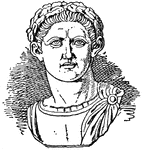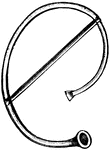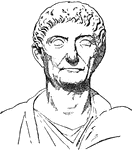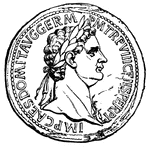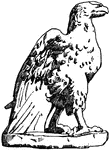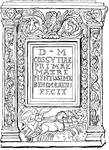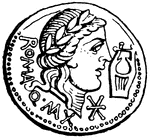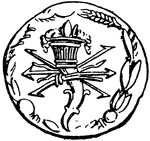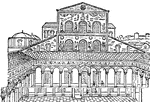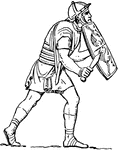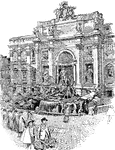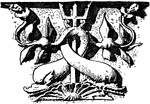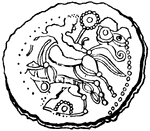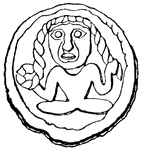
Trajan's Column
The Trajan's column is a monument in honor of Emperor Trajan located in Rome, Italy. The column is a…

Columns of Domitian
"The columns of cipollino, which belonged to the Palace of Domitian." — Young, 1901

Columns of Temple of Castor
"Columns of Temple of Castor, Temple of Augustus, and Palatine Hill." — Young, 1901
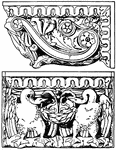
Roman Console
This Roman console is shown in the front and side view. It is a design that includes two decorative…
Roman Console
This Roman console is shown in its front and side view. It is found in the Temple of Jupiter Stator…

Constantine the Great
Emperor of Rome from 306 to 337. He is best known for being the first Christian Roman emperor.
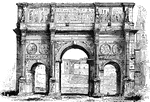
Arch of Constantine
"The vast Arch of Constantine owes much of its interest to its sculptures having been borrowed from…
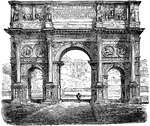
Arch of Constantine
The Arch of Constantine was erected to celebrate Constantine's victory of Maxentius at the Battle of…
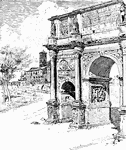
Arch of Constantine
"This arch is the most modern and the best preseved of all the buildings which remain of the Imperial…
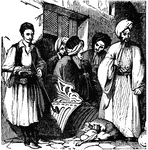
Life in Constantinople
In the streets of Constantinople one might find lemonade sands, sweetmeats, coffee, and pipes and at…

Jesus Carries His Cross and Comforts the Women Following Him
"And there followed him a great multitude of the people, and of women who bewailed and lamented him.…

Italian Renaissance Decorated Shaft
The Italian Renaissance decorated shaft is designed on a tomb in St. Maria del Popolo in Rome, Italy.…
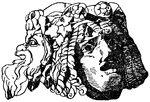
Mask Decoration
The mask decoration was founded in Pompeii, Rome. These masks were used as keystone decorations of doors…

SideMask Decoration
The mask decoration was found in Pompeii, Rome. These masks were used as keystone decorations of doors…

Denarius
"Denarius of the earliest kind: Having on the obverse a personification of Rome as a warrior with helmet;…

Coin of Diviciacus
The Coin of the King of the Suessiones, Diviciacus, with bust on front and prancing horse on back. Front.
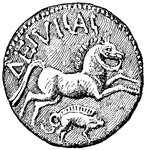
Coin of Diviciacus
The Coin of the King of the Suessiones, Diviciacus, with bust on front and prancing horse on back. Back.

Column of Duilius
Restoration of the column of Gaius Duilius, a Roman politician and admiral in the First Punic War.

Column of Duilis
"The column was adorned with the brazen beaks of the captured Carthaginian vessels. Part of the inscription…
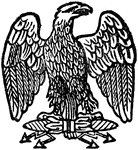
French Eagle
"The Eagle is an emblem in heraldry, war, and legend. The eagle, borne upon a spear, was used by the…
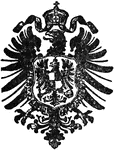
German Eagle
"The Eagle is an emblem in heraldry, war, and legend. The eagle, borne upon a spear, was used by the…

Roman Eagle
The Roman Eagle is in an oak garland a bas-relief. Originally located in Trajan's Forum, now is in SS.…
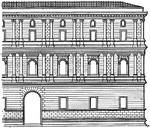
Façade of the Giraud Palace, Rome
In the Giraud Palace and the great Palazzo della Cancelleria, pilasters appear in the external composition,…

Plan of Farnese Palace
Palazzo Farnese is a prominent High Renaissance palace in Rome, which currently houses the French Embassy…

Lictors with Fasces
"The symbolic fasces borne by these officers were probably of Ertuscan origin. The Tarquins are said…

Faunus
"Sylvanus and Faunus were Latin divinities, whose characteristics are so nearly the same as Pan that…

Tomb of Beatrice and Lavinia Ponzetti Festoon
The Tomb of Beatrice and Lavinia Ponzetti Festoon is a leaf festoon found in St. Maria della Pace, Rome…

Tomb of Cardinal Della Rovere Festoon
The Tomb of cardinal Della Rovere Festoon is garland design found in Maria del Popolo, Rome during the…

Part of Shaft Foliated
The part of shaft foliated is a Roman state-candelabrum that is made out of marble. It is found at the…
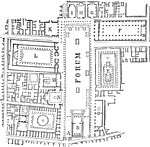
Forum of Pompeii
"Forum of Pompeii. A, principal entrance; B, a Corinthian temple; C, the public prison (carcer publicus);…

Parallel Fret Band
The parallel fret band is a pattern that is parallel in perspective that was found in a Roman mosaic…

Dolphin Frieze
The Dolphin Frieze is a part of a larger frieze found in Rome at the Arco della chiesa nuovo (the arc…
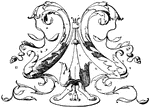
Dolphin Frieze
The Dolphin Frieze is part of a larger frieze in St. Maria della Pace, Rome. Designed by Bramate in…

Roman galley
"Elated by the victory, the Romans now determined to drive Carthage out of the island altogether. This,…

